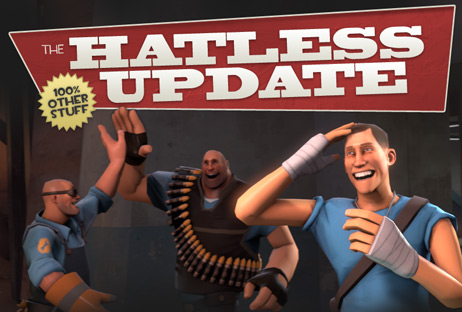You think you've been waiting a long time for a new Half-Life game? You haven't, really. It's "only" been three and a half years. Now, Team Fortress 2, that was a game long in the making.
The staggered development of Valve's iconic shooter took so long, and went through so many twists and turns, that it serves as the very embodiment of the expression "Valve Time". As in, Valve will release a game when it's damn well ready, regardless of how many changes it has to go through and how long it takes.
 A sequel to a hugely popular Team Fortress mod for Quake (which would later also be released as a Half-Life expansion), Team Fortress 2 was first announced all the way back in 1998, when Valve bought out TF Software Pty. Ltd, the creators of the mod. Team Fortress 2 was originally planned to ship as a Half-Life expansion towards the end of 1998.
A sequel to a hugely popular Team Fortress mod for Quake (which would later also be released as a Half-Life expansion), Team Fortress 2 was first announced all the way back in 1998, when Valve bought out TF Software Pty. Ltd, the creators of the mod. Team Fortress 2 was originally planned to ship as a Half-Life expansion towards the end of 1998.
It was delayed, however, and was not shown to the public for the first time until a year later. And couldn't be more different to the game we ended up with if it had tried. Going for a more "realistic" look than even the mildly sci-fi stylings of the original, Team Fortress 2 (subtitled "Brotherhood of Arms", and whose demo you can see up top) looked set to be a team-based shooter set in a near-future world that would feature large bases, an overall team commander, combat vehicles and even aerial drops.
A year later, however - in 2000 - the game went dark. Valve told press that it had been delayed again while the game was ported over to the company's new internally-developed engine, Source. And that would be the last anyone would hear of the game for over six years.
Half-Life 2 came and went, Half-Life 2: Episode One came and went, and still, the world knew nothing of the fate of Team Fortress 2. Despite protestations from Valve that the game was definitely being worked on, many began to believe the game was dead.
 Yet as they should have learned from Half-Life 2, Valve likes to take its time. And when the game finally returned to the public eye in 2006, it was easy to see why it had been hidden for so long: it was an entirely different game!
Yet as they should have learned from Half-Life 2, Valve likes to take its time. And when the game finally returned to the public eye in 2006, it was easy to see why it had been hidden for so long: it was an entirely different game!
About all that had remained from the original Team Fortress 2 pitch was the fact there were two teams fighting each other in a multiplayer match. Everything else had been changed. The vehicles were gone, the realism was gone, the serious tone was gone, the commanders were gone, the air drops were gone...all that was left were some maps, some guns and a handful of characters (which, in a cute touch, resemble the cast from the original mod).
So many changes had been made to the game, in fact, that Valve says it developed three or four entirely different titles during Team Fortress' gestation, which certainly would explain the long delay. One of these, which became known by the name "invasion", had elements leaked to the public when Half-Life 2's code was stolen ahead of that game's release, and suggested that one of the Team Fortress 2 versions in development during the six years of silence had included things like NPCs in multiplayer matches and references to the Half-Life universe.
Far from a retreat from the original vision, however, what we ended up with is one of the most enduring and iconic video games ever made, with a visual style and lovable cast of characters. Team Fortress 2 was eventually released in 2007 as part of Valve's Orange Box collection (and in 2008 as a standalone title), and is available for the PC, Mac, PS3 and Xbox 360 (though the latter two versions, sadly, are without the constant upgrades featured in the computer editions).
Total Recall is a look back at the history of video games through their characters, franchises, developers and trends.











